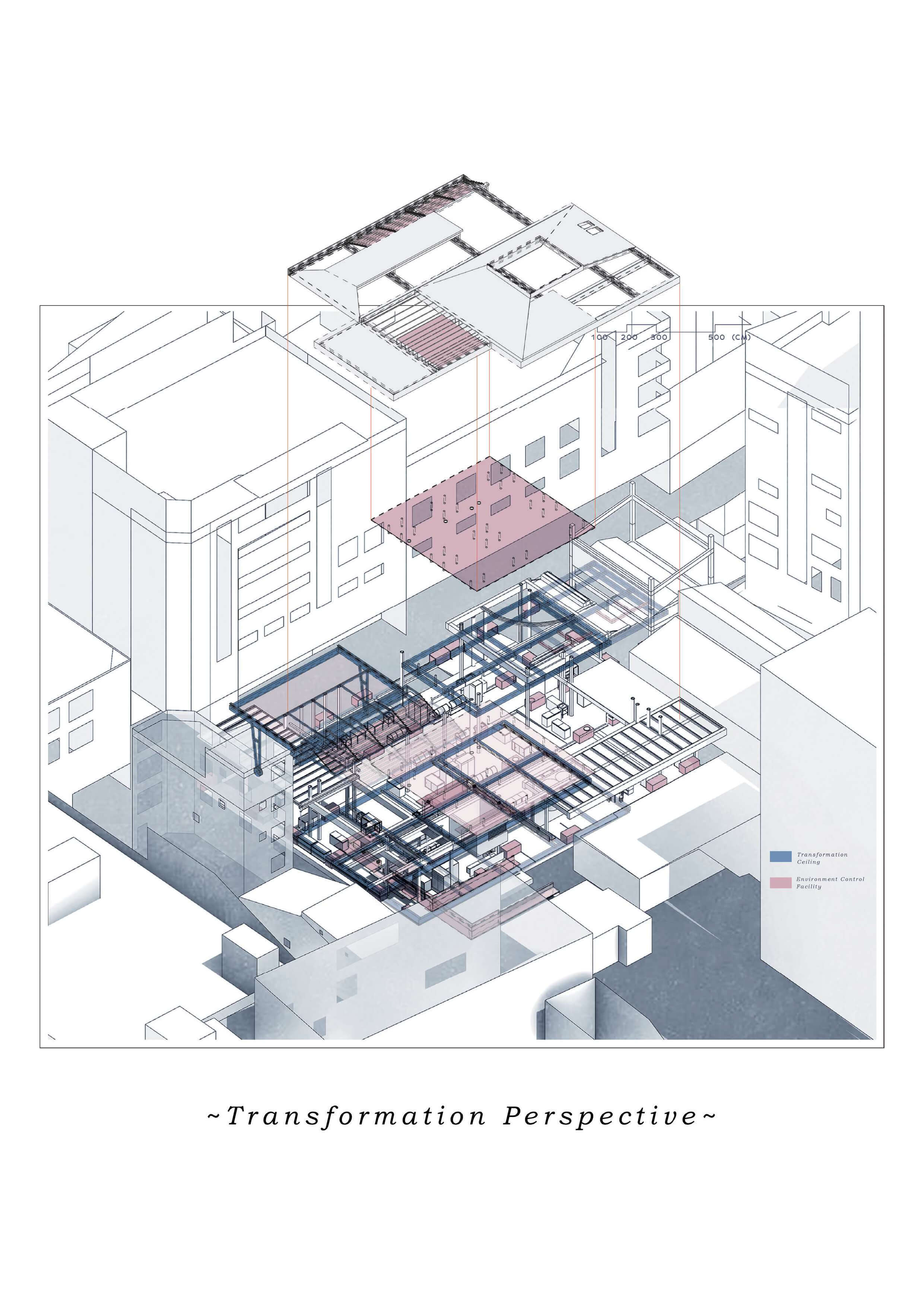
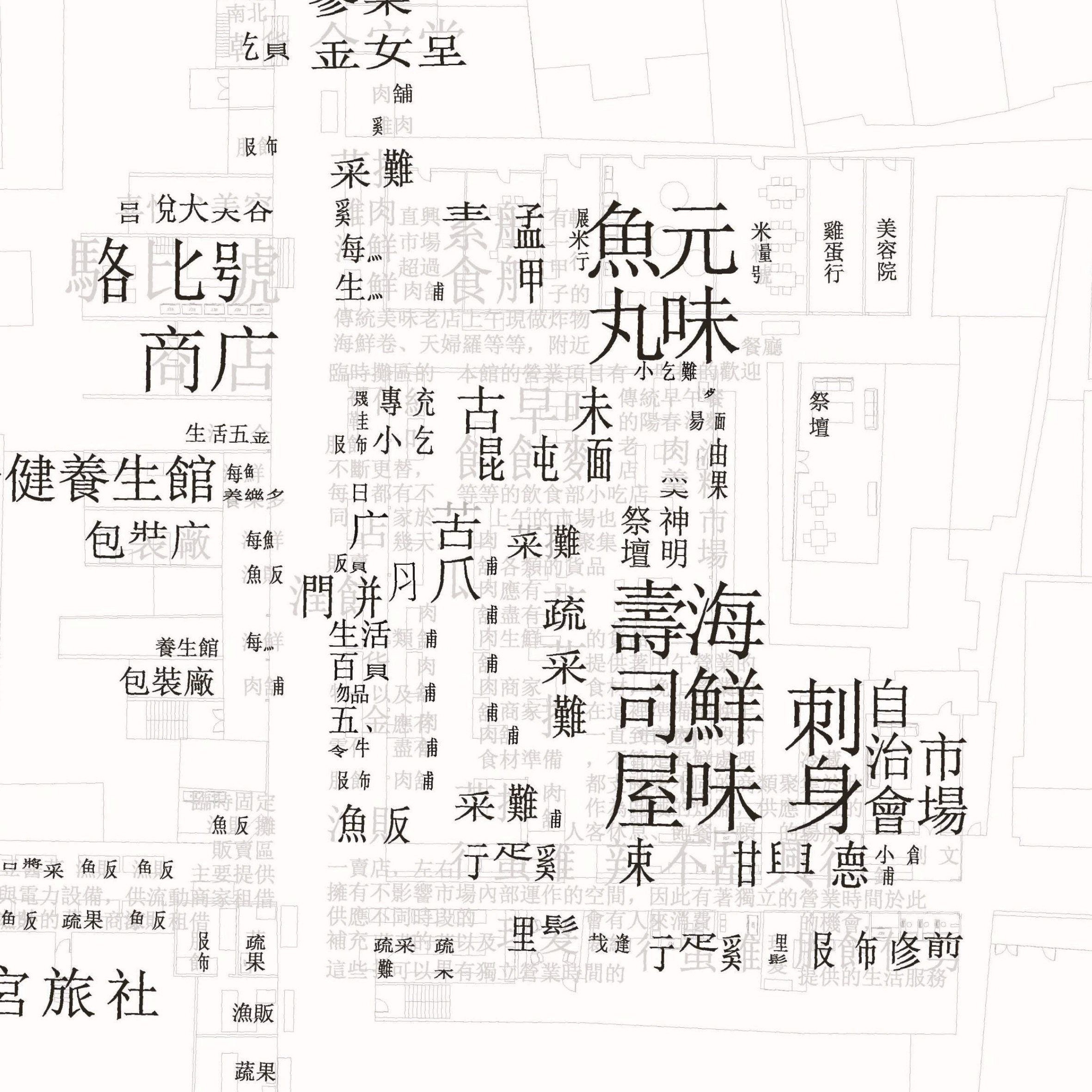

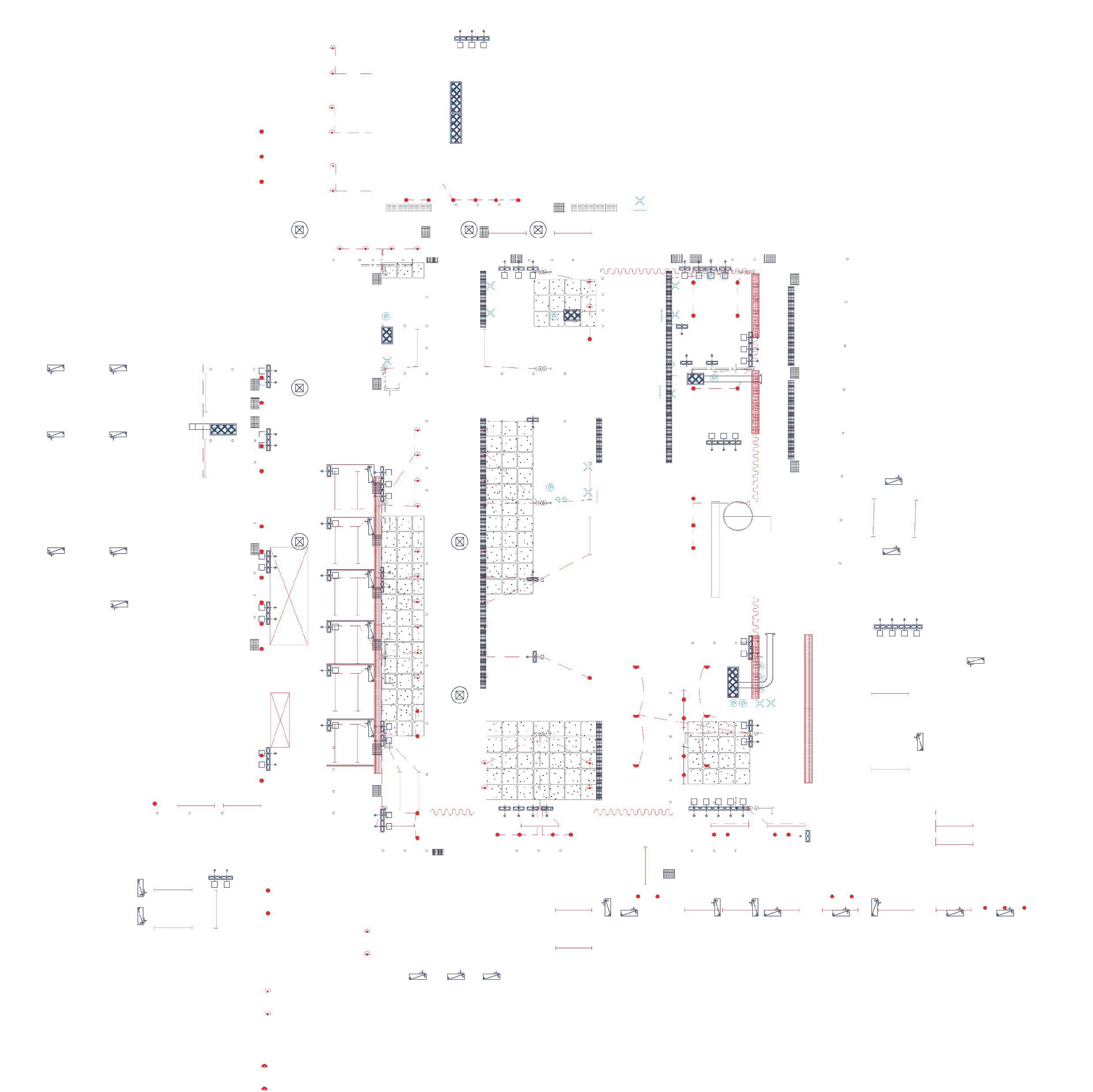
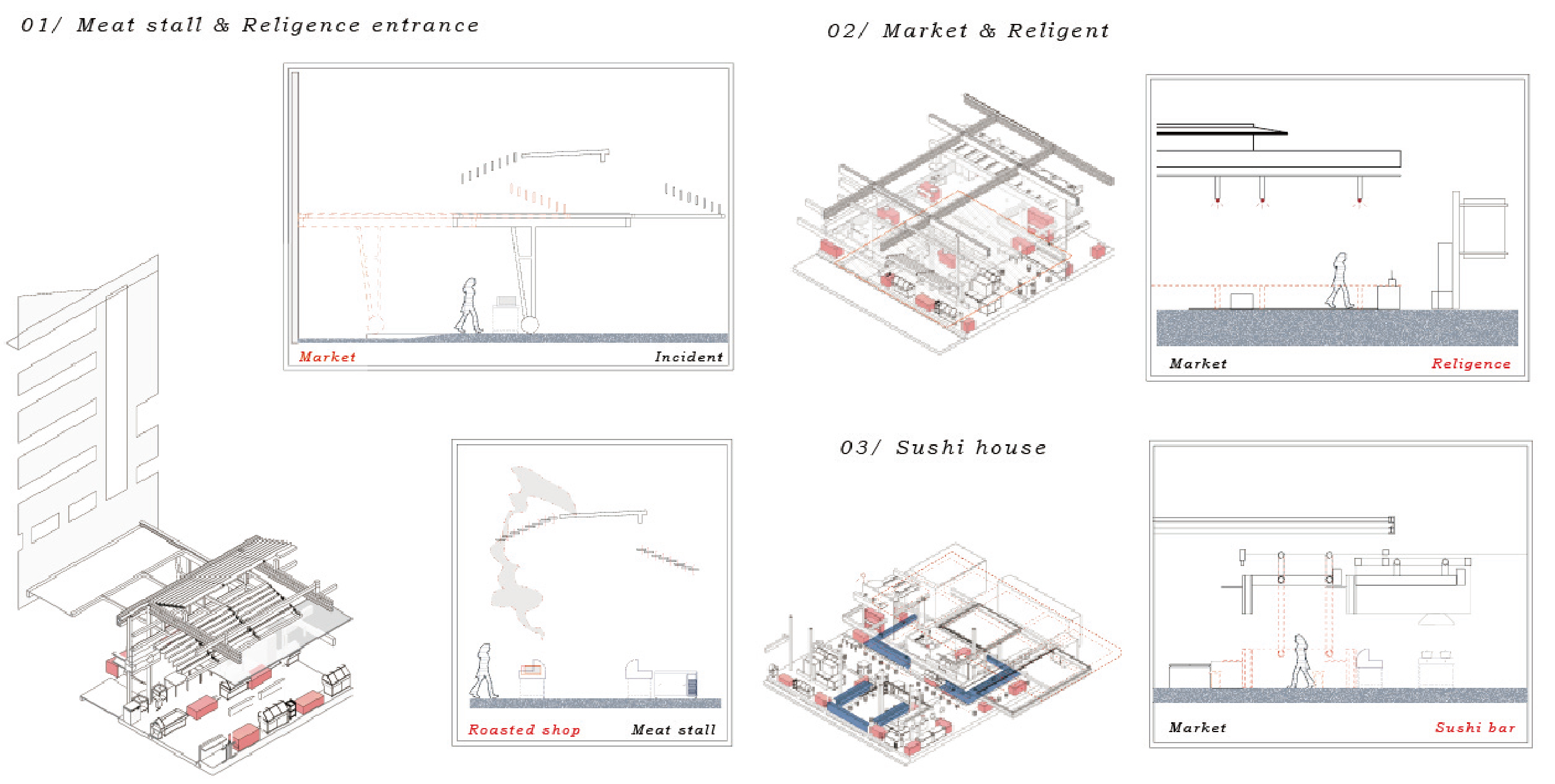
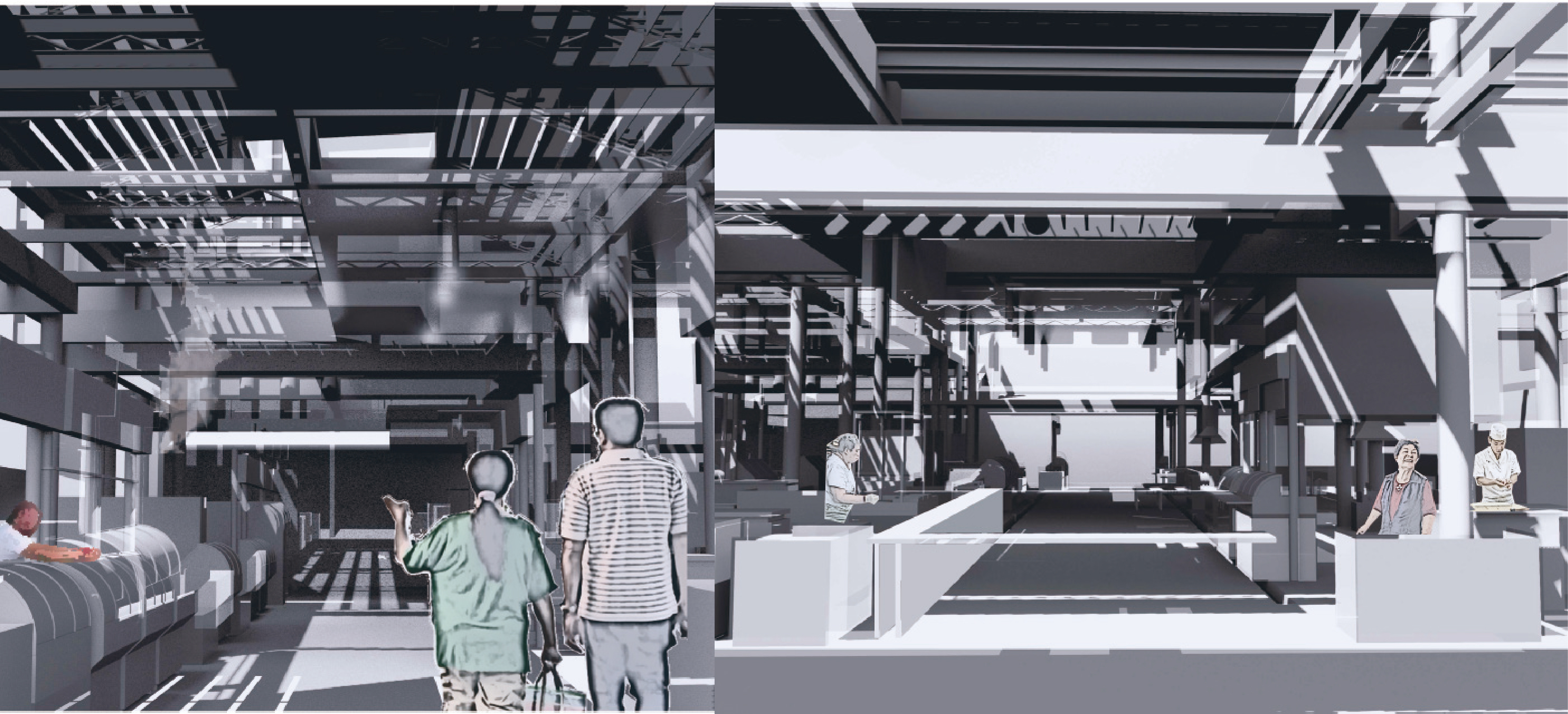
City Words Manufacturing : the Post Market Design
台灣 / taiwan
羅國碩 / Kuo-Shuo Lo
城市 是一篇文章,透過語言學的方式去閱讀城市,城市的變動性如何用語言的邏輯來重新詮釋 ?
用文學的方式研究一個台北正在沒落的市場,從最小的物件到城市的尺度,去了解市場生活的脈絡,包括攤販、設備、市場屋頂等,希望找到舊有市場真實的生活。從說文解字的六書,尋找市場攤販的組合邏輯;我發現市場秩序不只是攤販組合,而是對於微環境的生活狀態,如同文字部首,出現與消失都讓攤販有了更多被不同閱讀的可能。
藉由最真實的物件使用研究,尋找在複雜的市場中,既有生活與物件交織的記憶,將它們作為後市場時代被繼續閱讀而使用的建築語言。希望將後市場時代的變遷帶入文字邏輯後,從傳統物件至都市的觀察轉變成城市新舊文字遊戲的填字機制…
City is an Article loaded with history, memory and desire, and city reading makes us read differently through different perspectives. What if the city is regarded as an article, how can the variability of the city be interpreted and rewritten with the logic and words of language ?
Steven Holl used the English alphabet to study the building form and the city. And, I’d like to observe this text-filled city – Taipei City in Chinese. Chinese is fascinating because of “Multiple interpreted reading and overwriting”. By reconstructing the gaps between texts, the differences in reading created multiple understanding. With studying a way to read and manipulate the blanks in the city, could the variability of the city be brought into architecture ? Could the building be overwritten as a part of the city article ?
The site is the Taipei’s earliest developed street – Taipei First Street (Guiyang Street). In the context of history, the fascinating factors are hidden in the block around the Zhixing market facing erasure and rewriting.
More Projects of this Session
展區其他作品